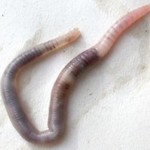 OSLO - Worms, bacteria and beetles living below ground are part of the largest and least known trove of life on earth that could have spinoffs from farming to pharmaceuticals, a UN report said on Wednesday.
OSLO - Worms, bacteria and beetles living below ground are part of the largest and least known trove of life on earth that could have spinoffs from farming to pharmaceuticals, a UN report said on Wednesday. "We know little of what is living below our feet...yet it is vital to sustaining life on earth," said Ahmed Djoghlaf, Executive Secretary of the UN Convention on Biological Diversity, which is hosting March 20-31 talks in Brazil.
French 19th century chemist and microbiologist Louis Pasteur was right to say that 'the role of the very small is large', Djoghlaf told Reuters.
Experiments in promoting natural organisms in soils -- shifting from use of artificial pesticides and fertilisers -- had helped improve crop yields in some studies in Brazil, Ivory Coast, Indonesia, India, Kenya, Mexico and Uganda.
Experts in the project believed that soil-dwellers such as earthworms, fungi, termites, ants and bacteria were part of "biggest source of untapped and unknown life on earth", a UN statement said.
The life forms could help farming and were "a potential source of new...pharmaceutical and industrial products," it said. Most bids to chart life on earth focus on exotic rain forests, coral reefs or mangroves -- overlooking humble mud.
In India, for instance, re-introduction of local earthworms had improved tea harvests at some plantations by almost 300 percent, Djoghlaf said.
BEAN COUNTERS
In the Los Tuxtlas reserve in northern Mexico, bean yields had risen more than 40 percent after farmers started using a type of nitrogen-fixing microbe found in local forest soils as a "bio-fertiliser".
Soil-burrowers such as termites -- often dismissed as pests -- can help aerate soil and ensure that it can absorb water.
The report said the benefits of diverse soils went beyond farming -- the Los Tuxtlas reserve was a rain forest where 40,000 hectares (98,840 acres) were lost in the past 40 years.
"Boosting yields using naturally occurring soil organisms may reduce the need to clear more forest for agriculture, thus helping to conserve the forest and its diversity both above and below ground," it said.
And soils were often richer in life in forests and fallow land than on farms. A study in Indonesia showed that "the richness and abundance of ants, beetles and termites decreased with increasing land intensification," it said.
Researchers in the project, launched in 2002 and coordinated by the Tropical Soil Biology and Fertility Institute in Nairobi, had also added 15,000 specimens, ranging from worms to fungi, to national collections. Many were believed to be new to science.
The UN talks in Curitiba, Brazil, are seeking ways to achieve a UN goal, set by world leaders in 2002, of slowing the rate of loss of the diversity of life on earth by 2010.



